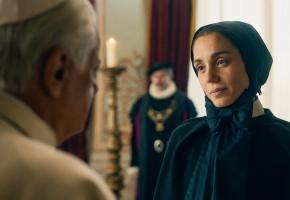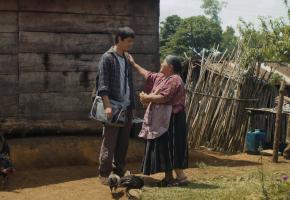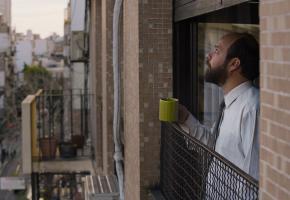Writer/Director Nathalie Álvarez Mesén was born in Sweden. Her mother is from Costa Rica and her father from Uruguay. After studying physical theatre and Mime and ended up telling stories from behind the camera, rather than in front. Despite that the connections to dance and body remain strong in her essence.
“Clara is dance, but a very internal dance”- says the protagonist Wendy Chinchilla Araya, describing the character that she plays. This very apt, given that she is a dancer herself, by profession. This is not by chance. Nathalie Álvarez Mesén was determined to cast a person who was in tune with their body, to better reflect the complexities and the way that Clara is a child of nature.
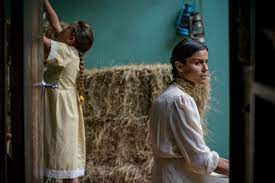
Wendy Chinchilla Araya as Clara
Set in a village deep in the Costa Rican forest, Clara is now a 40- year old woman. She is an ultra-sensitive woman, almost feral, which results in her being like a shrinking fern, that withdraws from close contact. She bonds with animals in a way she finds hard with humans. She suffers in silence from the pain caused by the scoliosis in her spine, yet, at the same time, she is venerated by the local Catholic community, who see her sensitivity as being that of a mystical being.
People flock to her to pray and be blessed, hoping for miracle cures. They sing with her in religious rituals mediated by her very religious grandmother Doña Fresia, played with conviction by non- professional actor Flor María Vargas Chaves. However, there is a certain controversy in Doña Fresia’s attitude. When she is offered the chance to allow Clara’s scoliosis to be operated on, to make her free of pain, and enable her to walk straight, she replies “God gave her to me like this, so she will stay like this”. The cruelty in that statement is almost unbearable and yet Doña Fresia sees herself as a loving protector and champion of the girl, even if she also controls her, as she places heavy burdens of expectations upon her, while maybe even exploiting her abilities. Clara is expected to behave in a certain way, both for being ‘mystical’ and for being a woman.
Álvarez Mesén: -
“It depends on how you view it. For me, it was important that the family cares about her and that they believe [have faith]. So, even if she’s doing something that, for us, is negative for Clara, in her eyes, Doña Fresia is doing what she thinks is best for her and for the community. The Catholic religion (ethos) is so much a religion of service and shame, that she’s abiding by the rules that she inherited, so I would say that she didn’t know any better, but, [in effect] it’s horrible. She’s inheriting something horrible, but in reality, it’s just turning up the volume to things that happen in our society in every family! Impositions like: you have to be a doctor, you have to study this, you have to … it’s violent… but we chose to turn up the volume, in order to tell things that are specific to this story.”
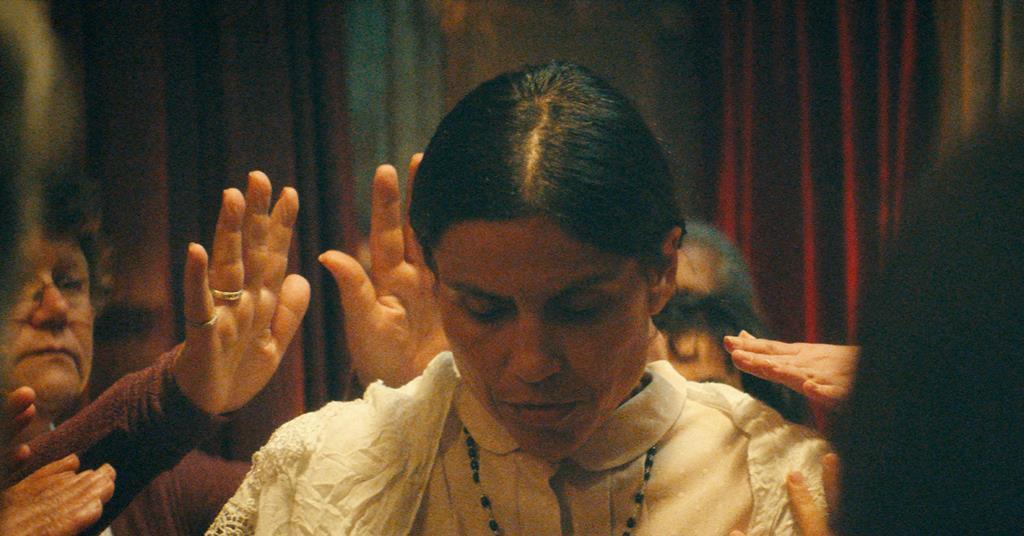
Wendy Chinchilla Araya at a religious ceremony
The feminist undertones are strong. Clara reacts to this oppression imposed upon her by the norms and traditions of how women are expected to behave in certain communities. Marginalized by the local people, who cannot see the cruelty behind how they are treating her for being ‘different’, Clara realizes that the only friends she can rely on are the animals. In particular, a magical white horse, who, like a unicorn, responds only to her. Is it real or is it a mirage? Then, as her niece María, a 15-year old discovers her sexuality, Clara’s own sexuality awakens, but she soon discovers that it is not in keeping with what is expected of her. Both her niece and herself focus their sexuality on Santiago, (subtly played by Daniel Castañeda Rincón) with all the nuances of a coming-of-age awareness. However, the director was particularly keen to avoid a misconception of jealousies and competitiveness between the two women.
Álvarez Mesén explains how the character of Clara was conceived: -
“Clara was born from the inspiration of a stills photograph of Gregory Crewdson. It’s a very different aesthetic, but there was something about the picture that planted a seed, as well as a painting by the Swedish painter Karin Broos…”
Both these image-makers work a lot with women as a subject matter. Pervaded with an element of marginalization, isolation, solitude even pain. There is the suggestion of a powerful internal life. Women seem vulnerable, naked or in their underwear, in intimate surroundings like bedrooms. Interiors, in states of contemplation. This suggests women who have been obliged to live in a certain way, possibly with no choice, according to the demands of the lives they lead.
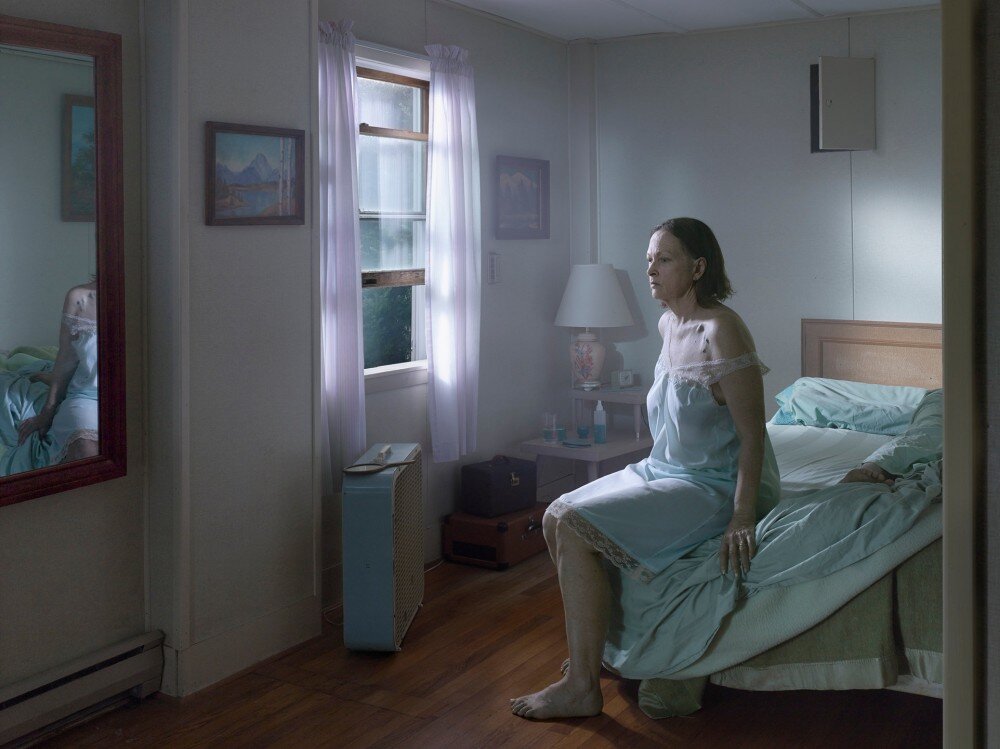
Gregory Crewdson photograph
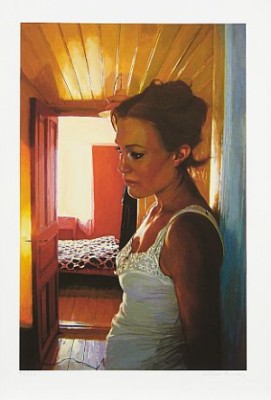
Karin Broos painting
“… That was the initial thing, where that character first came from, and how she was and how she viewed the world. The themes of the film were developed from there and from memories of growing up in Latin America and [experiences] that me and my co- writer (Maria Camila Arias) had, even if we came from different countries. I come from Costa Rica and she’s Colombian. We had both left our countries in our teenage years to study and we have remained abroad … so, how we viewed our time growing up there and what we wanted to communicate about the inheritance from women to women and how women should be, what are the norms that are passed on to us , and [ what is expected of us].”
This feminine element is strong in the choice of crew, unusual in many productions: -
“[It happened that] a lot of the crew were women although the project was initiated originally with a ‘man’ the producer, Nima Yousefi . He’s been the one that’s been carrying this on his shoulders with me from the very beginning, from when the project was one paragraph! Then the co-writer came on board (María Camila Arias), who is a woman. The DOP is a woman (Sophie Winqvist) and the editor is a woman (Marie-Hélène Dozo), so there are a lot of women around. But there are also a lot of men, I think we’re about 50- 50. [The main character] Clara is a very curious character, maybe in a different sense to most people. She pays attention to the little details of nature and how it changes, instead of the things that other people are preoccupied with… she’s in tune with nature. She has an intuitive relationship with nature as that is where she feels she can be herself, because nature doesn’t demand anything of her. Actually, it’s the only relationship in her life that doesn’t demand anything of her, because everyone else asks something of her…and expects her to be in a certain way and she has to abide by certain rules.”
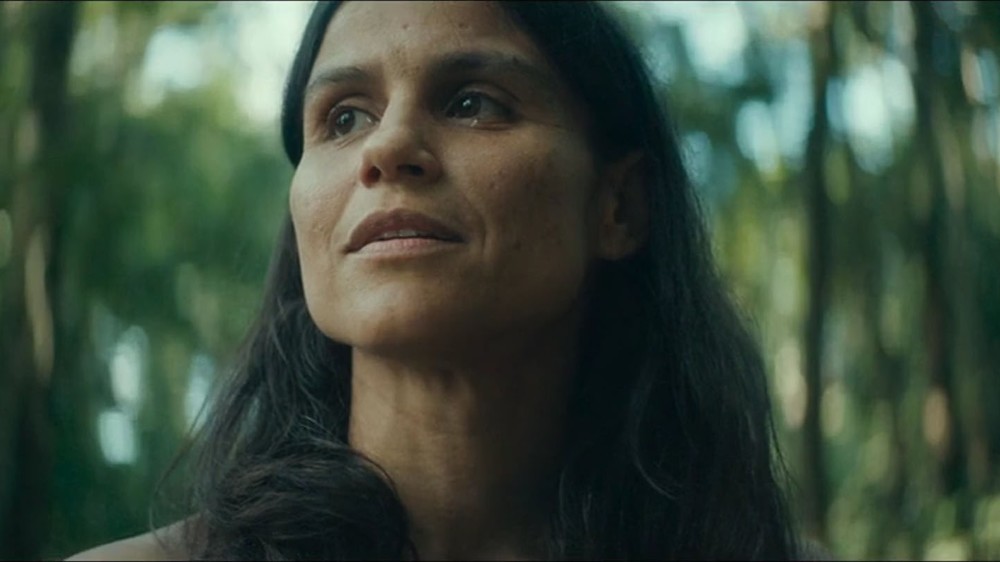
Wendy Chinchilla Araya
Some parts have a documentary feel about them which is deliberate, Álvarez Mesén wants to enhance the element of magic realism as everything is seen from Clara’s perspective.
“We have some points where we move away from this style, to create images that have less to do with a different kind of magic realism and more to do with poetry. This is a form of magic realism that the audience can view from outside of this story, which is different from what Clara knows… to create a feeling of magic… The [white] horse was always there! (laughs) She has her best friend … and the horse impersonates how her communication with nature is more honest, so the horse is an extension of that. It was interesting to work with a horse and also very scary. They get very scared until they get used to you, even though we had a trainer on the set all the time. Of course, Wendy, the actress, trained with the horse before [shooting], so that they could form a bond and a connection… White is seen as attached to purity, which is problematic … but the horse doesn’t care what colour it’s and it’s the same with Clara. She’s seen as this pure maiden, who doesn’t want that because it’s a burden for her. Also, there’s the way that the horse is unable to hide, even in its own natural space, because it pops out. It is the same with Clara in the human world, everyone comes to her. So they’re connected in that way and the horse is like a foreshadowing of Clara’s story.”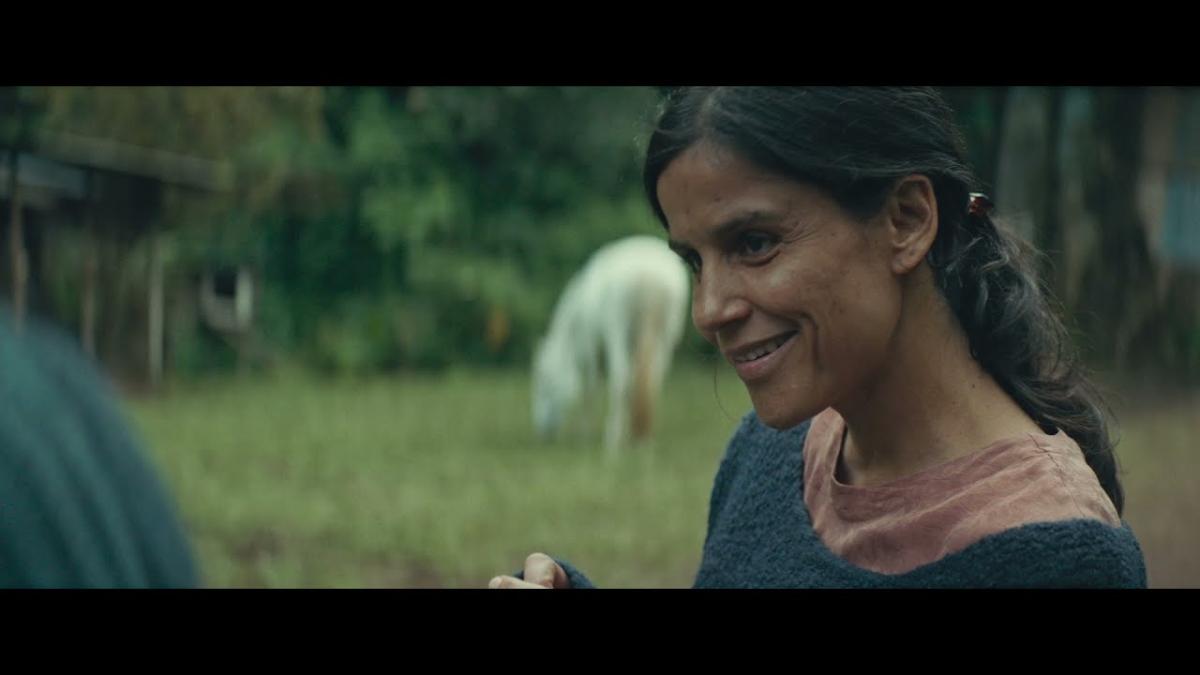
Wendy Chinchilla Araya
Right from the time when the movie was a mere idea, Álvarez Mesén knew that she wanted a protagonist with an intuitive attitude to life. Having studied physical theatre and Mime in Sweden, these aspects are extremely important for her: -
“I wanted to work with a dancer or someone that had some connection to their body, like martial arts. I looked at some actors, but, in the end, I always knew that she had to be a dancer. So, I went to watch dance shows and I saw her (Wendy Chinchilla Araya) there. I have known about her since I was a teenager, because, in my teens, I did a lot of dance, but she didn’t fit the role. She was 10 years older [than my written character]. She was perfect except for the age. So, I re-wrote [the script] for her, until yes… I realized it was better that we offer her the role. In the end, it didn’t matter, because for her, it doesn’t matter how old she is.”
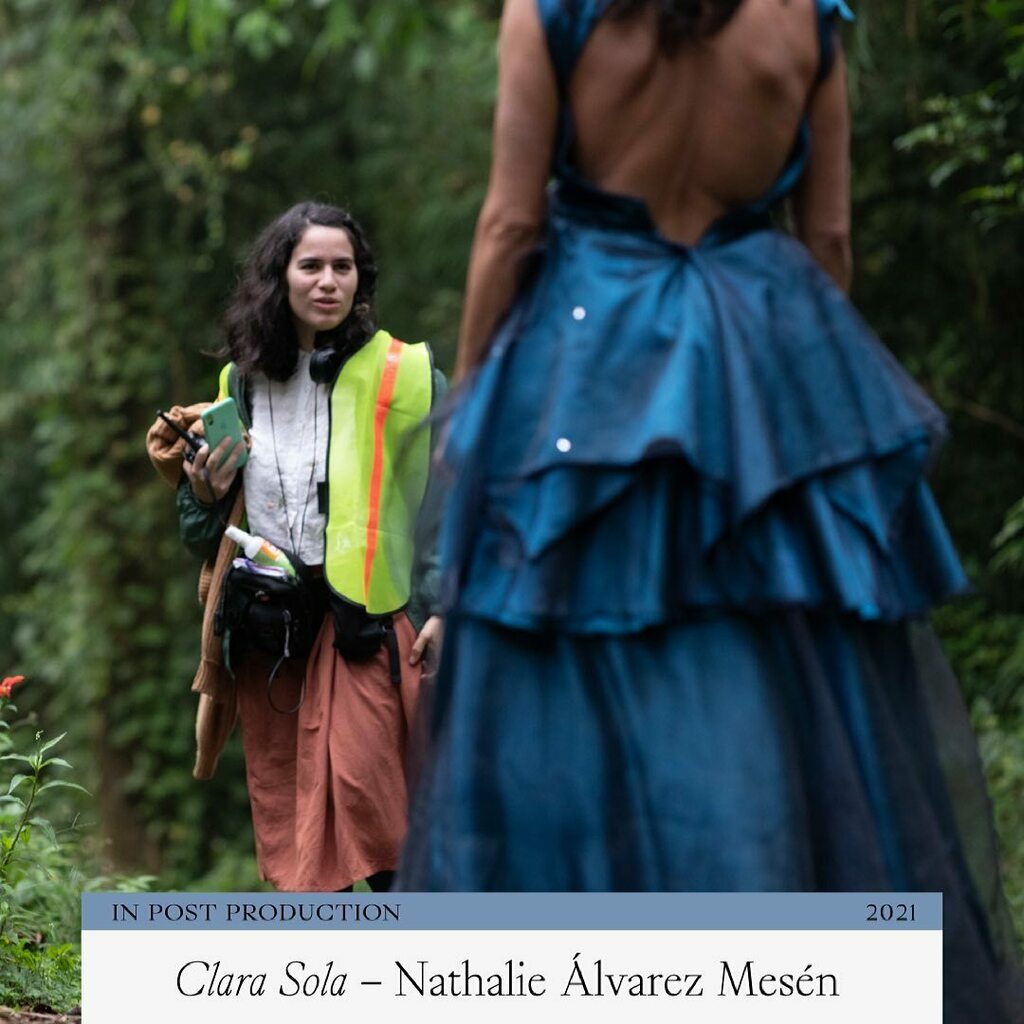
Nathalia Álvarez Mesén and Wendy Chinchilla Araya on set
One particularly impressive aspect of this production is the quality of the foley sound and the music. The soundtrack develops a language all its own and transports you into the mind set of Clara with ease. The original music is the work of Ruben De Gheselle, a young Belgian composer. Álvarez Mesén was determined to get the sound right and worked closely with him for a long time which she found very enriching.
“He’d been giving me sketches of music since before the shoot. Maybe because we had to do the prayer songs and I wanted everything to be new. I didn’t want to use old [material] as it is supposed to be a fictional town. He composed those and I wrote the lyrics and we started working that way, also with sketchbooks. I never gave him any sound [references] only images. I said: ‘here I want it to be like light refracting…’ He asked for stills from the movie and then he composed for them, and I would listen without knowing to what image the music was attached and I would go ‘Oh, this would fit to this…’ and sometimes, he would have different pieces for each scene… and then we would chose and go on from there. Sometimes he did up to 6 pieces and in the end, it was like … no… in this bit here, maybe just [foley] sound is better for the film. So, he is very wise and we had a nice collaboration.”
Nathalie Álvarez Mesén is now working on a new feature which she describes as “a tropical gothic film touching in the same these themes: norms about how women are expected to be. It has a dramatic working title: “The Wolf will tear your Immaculate Hands”, so we will wait for that one too.
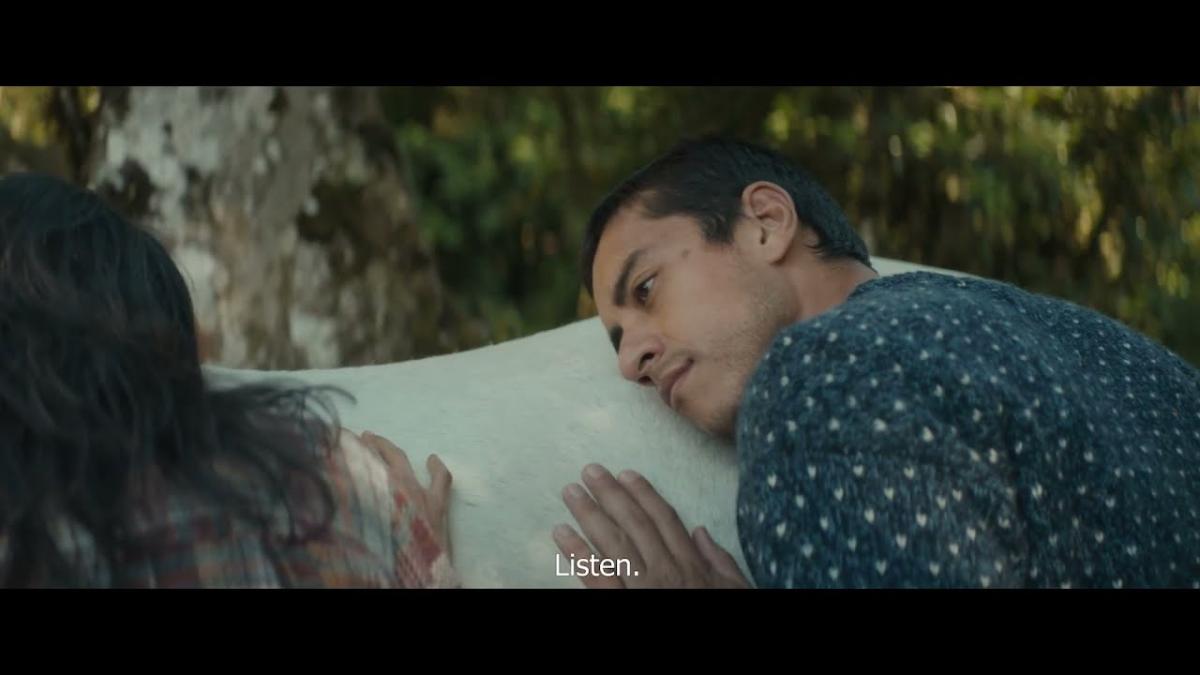
Daniel Castañeda Rincón as Santiago and the object of the affections of the two protagonist girls
CLARA SOLA (2021) will be released in the UK on November 18th 2022.
Director: Nathalie Álvarez Mesén / Screenplay:Nathalie Álvarez Mesén and María Camila Arias / Production: Nima Yousefi , Alan McConnell/ Marcelo Quesada / Géraldine Sprimont / Karina Avellan Troz. DOP: Sophie Winqvist / Editor: Marie-Hélène Dozo /Original Music: Ruben De Gheselle
Cast: Santiago: Daniel Castañeda Rincón/ Clara: Wendy Chinchilla Araya /Maria: Ana Julia Porras Espinoza /Doña Fresia: Flor María Vargas Chávez
Watch Wendy Chinchilla Araya dance on https://youtu.be/yB9gOKzEsL4 filmed at the IRSE Teatro Nacional V2



